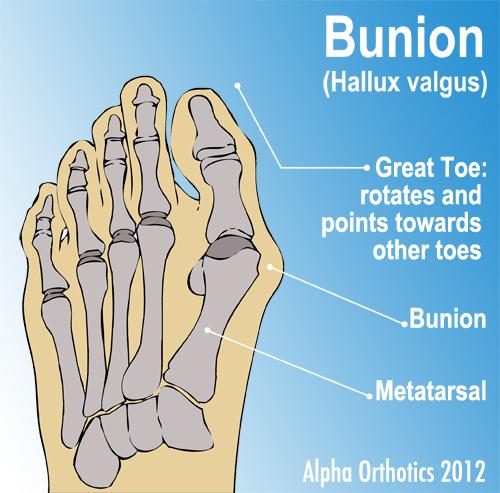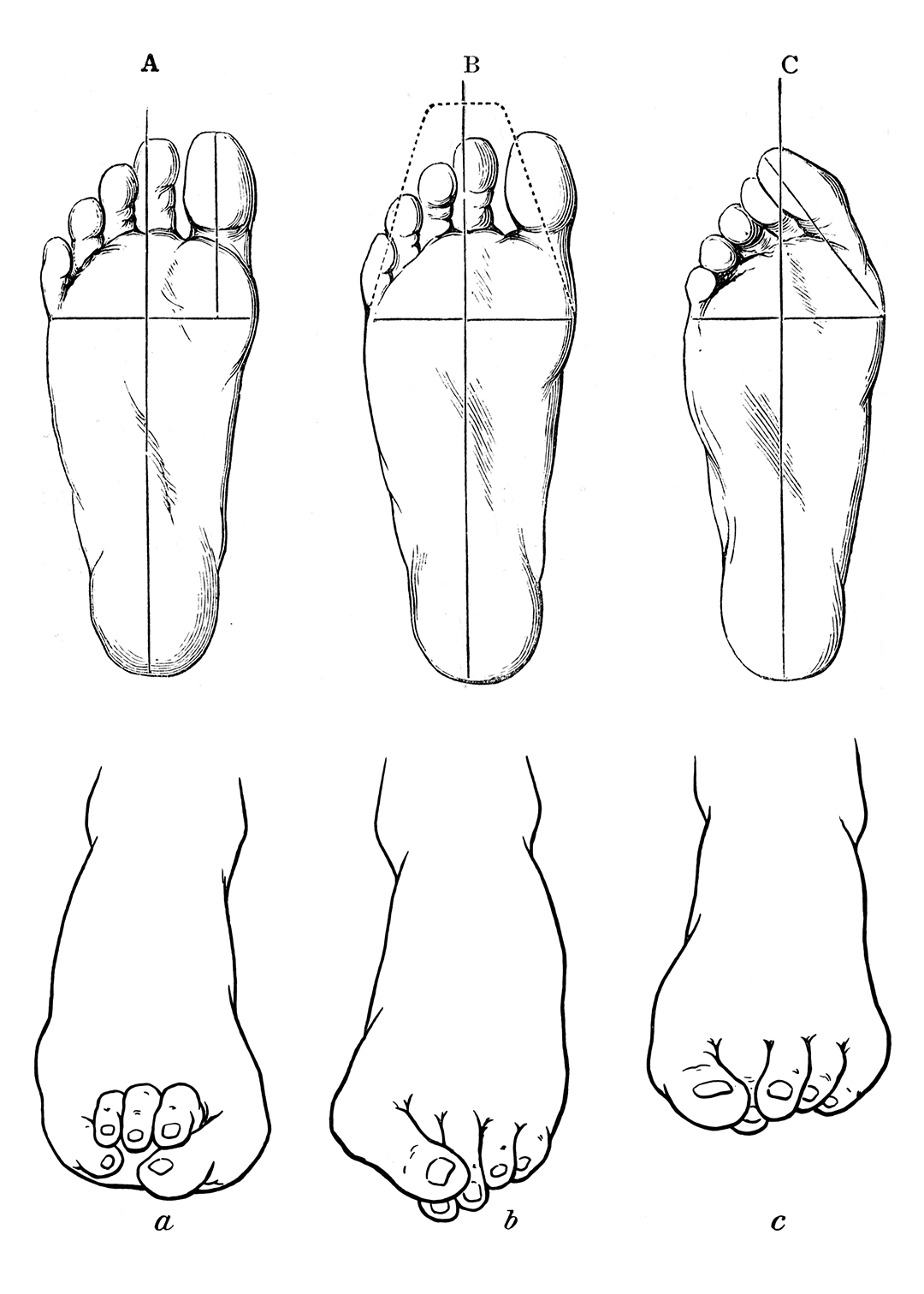What are Bunions (Hallux valgus)?

Bunion pain, hammer toe, and calluses can be symptoms of bunions
In orthopedics, “bunions” and Hallux valgus are terms used to describe one of the most common ailments of the foot—especially among women.
A bunion is a mal-alignment of the two bones that form the base joint of the big toe (also called the metatarsophalangeal joint). Due to the mis-alignment, the big toe begins to angle inward towards the other toes, thrusting the base joint out further in the opposite direction.
Aside from being unsightly, bunions can develop into a painful condition over time, if neglected.
Symptoms of a Bunion (Hallux valgus):
Early Symptoms of a Bunion
- Movement of the big toe towards the smaller toes
- Bump on the base joint of the big toe
- Deep dull “in the joint” pain – bunion pain
- Pain on top or side of the big toe from shoe pressure
Progressive Symptoms of a Bunion
- Continued mal-positioning of the big toe and base joint
- Increasing bunion pain when walking, running, or standing
- Formation of calluses on the medial border of the big toe
- Chronic irritation of the skin and base joint bursa
- Progressive arthrosis or arthritis and stiffening in the big toe base joint
- Foot deformities such as hammertoe and claw toe

How does a bunion develop?

Flat feet are the most common cause of bunions
Bunions develop over time. In most cases, but not all, the disposition for developing bunions is hereditary due to the biomechanics of the foot, muscles and ligaments.
Overpronation which causes the feet to flatten (flat feet) is the most common cause of bunions. Overpronation places excessive pressure on the tendon in the upper mid-foot. This tendon, between the first and second metatarsal, begins to contract, pulling the big toe laterally towards the second toe. The first metatarsal begins to move away from the second metatarsal bone, causing the base joint of the big toe to spread. Once the joint stretches out, calcium deposits develop, and in some cases, nerves of the toe joint become more exposed and sensitive.
Other causes of bunions include injuries and certain activities that cause chronic inflammation. Contrary to popular belief, bunions are not primarily caused by wearing tight, “pointy-toed” shoes and/or high heels – although doing so may substantially contribute to the further progression of a bunion.
What are the degrees of bunion (Hallux valgus) severity?
First Degree Bunion
Toe mal-positioning below 20 degrees. Possible inflammation. Possible intermittent bunion pain. This is the first stage of hallux valgus and the beginning of bunion pain. At this point, Bunion Aid®, the flexible, hinged splint, can be worn while walking for early prevention of painful bunions and avoiding bunion surgery!

Second Degree Bunion
Mal-positioning between 20 and 30 degrees. Occasional severe bunion pain. In this phase, the Bunion Aid® treatment splint can be used more frequently to correct the mal-positioning of the toe and correct painful bunions before they progress to more painful cases of hallux valgus.

Third Degree Bunion
Mal-positioning between 30 and 50 degrees. Regular pain. Increasing restraints on activities. Pronounced mal-positioning! A consultation with a medical care professional is recommended in addition to using Bunion Aid. Also wear an arch support, i.e. the Medial Mid-foot Brace, to stabilize the metatarsal bones and take pressure way from the bunion while wearing shoes.

Fourth Degree Bunion
The most severe form of bunions, with mal-positioning over 50 degrees and painful restraints on everyday activities. Surgery is usually recommended as the first measure. Instead, wear an arch support, i.e. the Medial Mid-foot Brace, to stabilize the metatarsal bones and take pressure way from the bunion while wearing shoes. If your physician has recommended surgery, Bunion Aid® is usually recommended to assist in post-surgical rehabilitation.

How does Bunion Aid treat Hallux valgus?

- Realigns big toe mal-positioning of mild to moderate bunions
- Maintains surgical fixation of big toe after bunion surgery
- Restores normal flexing action of foot
- Improves balance and stabilizes gait
- Anatomically curved metatarsal and toe straps provide comfort and fit
- Adjustable strapping system aligns big toe
- Dual strapping system stabilizes the mid-foot arch
- Padded hinged splint protects irritated tissue and absorbs pressure
- Adjustable metatarsal pad relieves pain of toe joints, optimizing pressure distribution
- Maintains surgical fixation of toe and shortens rehab time after bunion surgery


